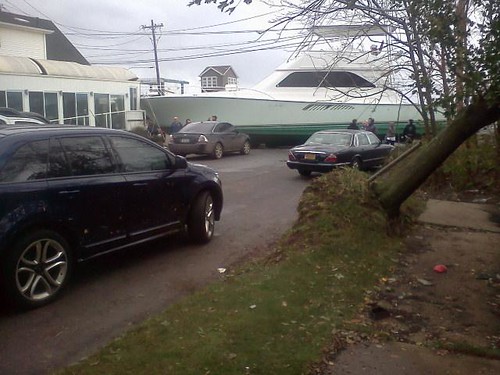
When the state first heard the news about a storm possibly hitting the East Coast, many people in New York did not know what to expect. Would it make landfall before New York? Would it take a turn and dissipate over the Atlantic Ocean? Forecasters had predicted that the storm would deliver “severe winds, rain and even the potential of life-threatening flooding throughout the Eastern seaboard.” As New York City began widespread evacuations and shuttered the City’s transit system, the state collectively held its breath.
A few hours later, their forecasts proved accurate as Hurricane Sandy came crashing ashore just South of Atlantic City, New Jersey. Many communities lost power, water, and transportation service. Affected Rural Development projects experienced property damage, power loss to energy projects and housing units (single and multiple family units) throughout Long Island and Downstate N.Y. A sewer plant facility in Catskill, N.Y. suffered minimal operational damage and there were reports of hundreds of downed trees from Ulster to Suffolk Counties. New York City took the brunt of Sandy’s high winds, torrential rains and powerful wave action – ultimately flooding city streets, residences, inundating tunnels with water and debris -- wreaking havoc on the electrical, transportation and maritime infrastructure.
Rural Development N.Y. staff responded immediately, having learned the lessons from Hurricanes Irene and Lee the year before. Acting State Director Dave Schermerhorn, Eastern Region Area Director Ronda Falkena, Area Specialist George Popp from the Middletown Area Office and other USDA Rural Development staff members statewide made calls to project recipients to ensure that those in the path of the storm had the necessary contact information for the nearest USDA office – in the event they needed assistance.

After the storm passed, the focus quickly shifted to getting the big picture from state and federal level partners in establishing where the most damage was and how we could best help our fellow New Yorkers regroup, recover and get back on their feet.
We have been working with our partner agencies, particularly FEMA, the Small Business Administration, the Department of Commerce Economic Development Administration and the U.S. Department of Housing and Urban Development along with various state agencies to assist the hurricane victims. We also thank Governor Cuomo and members of his administration for providing frequent reports on the status of damaged infrastructure, availability and locations of assistance and progress of restoration efforts.
We want to thank all the folks around the country for their well wishes and prayers and thank them for their generosity in helping the hurricane victims. USDA Rural Development stands ready to assist and we are confident that our programs will be useful in helping rebuild these communities in the coming years.
To find out how you can help or donate to assist the hurricane victims, click here.
